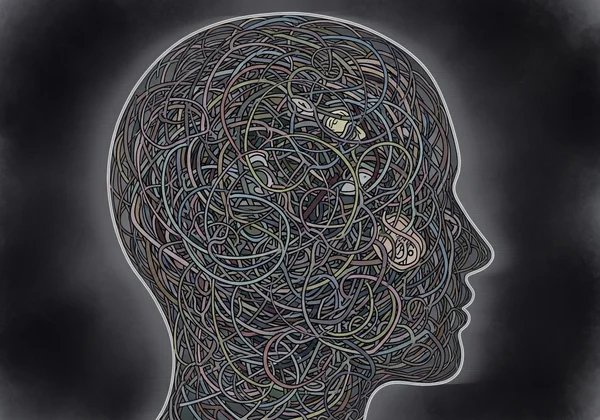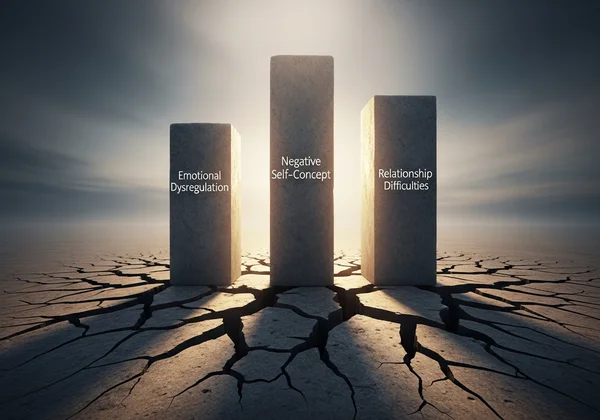CPTSD Test: 25 Signs of Complex PTSD Explained
Feeling perpetually overwhelmed, confused, or on edge? If you've endured long-term trauma, you might find yourself searching for answers, wondering if your persistent struggles are part of something deeper. Many people in your position ask, how can I tell if I have CPTSD? This comprehensive guide will walk you through the key indicators of Complex Post-Traumatic Stress Disorder (CPTSD), offering the clarity you deserve. This article serves not only as a checklist but as a preliminary step before taking a formal CPTSD test. Understanding these signs can empower you to take the next step toward healing. If what you read here resonates, a great first step is a free CPTSD test to gain initial insight.
What is Complex PTSD (CPTSD)? Understanding the Core
Complex PTSD is a psychological injury that can develop in response to prolonged, repeated trauma where the victim has little or no chance of escape. Unlike single-event trauma that can lead to PTSD, CPTSD often stems from experiences like ongoing childhood abuse, domestic violence, or being a prisoner of war. The chronic nature of the trauma is what makes the impact so deep and complex, affecting one's sense of self, relationships, and ability to regulate emotions.
CPTSD vs. PTSD: Key Differences in Trauma Response
While both PTSD and CPTSD share symptoms like flashbacks and avoidance, the key difference lies in the trauma's duration and the resulting impact on personal development. PTSD typically follows a single, terrifying event. CPTSD, however, is rooted in a history of chronic trauma. This leads to additional, pervasive difficulties known as Disturbances in Self-Organization (DSO), which include challenges with emotional regulation, self-concept, and relationships—symptoms not central to a standard PTSD diagnosis.
The Impact of Chronic Trauma on Development
When trauma occurs over months or years, especially during formative childhood years, it fundamentally shapes a person's brain development, attachment style, and core beliefs. A child growing up in a constantly threatening environment learns that the world is unsafe and that people cannot be trusted. This can lead to a lifetime of struggling with feelings of worthlessness, difficulty forming secure bonds, and a nervous system that is perpetually in survival mode. Understanding this foundation is key to understanding the symptoms that follow.

The 3 Pillars of Disturbances in Self-Organization (DSO)
The World Health Organization's ICD-11 diagnostic manual officially recognizes CPTSD and outlines three core categories of symptoms that go beyond those of classic PTSD. These "Disturbances in Self-Organization" are the bedrock of a CPTSD experience.

Affective Dysregulation: Managing Intense Emotions
This refers to significant difficulty managing your emotions. It isn't just about feeling sad or angry; it's about experiencing emotions that are intensely overwhelming and difficult to control. You might experience sudden, explosive anger over minor issues, persistent sadness that feels bottomless, or a troubling emotional numbness. Many also struggle with chronic suicidal thoughts or self-harming behaviors as a way to cope with the emotional pain. It can feel like you lack an internal thermostat for your feelings.
Negative Self-Concept: Struggling with Self-Worth
Chronic trauma teaches you devastating lessons about yourself. It can instill a deep-seated belief that you are worthless, broken, or fundamentally flawed. This negative self-concept is characterized by pervasive feelings of shame and guilt. You might blame yourself for the trauma you endured or feel like you are inherently "bad." This can lead to a harsh inner critic that constantly berates you, making it nearly impossible to feel self-compassion or acknowledge your own strengths.
Disturbances in Relationships: Trust & Connection Challenges
After being repeatedly hurt by others, especially caregivers, trusting people can feel impossible. This pillar of CPTSD involves profound difficulties in sustaining relationships and feeling close to others. You may avoid relationships altogether to protect yourself from being hurt again, or you might find yourself in a cycle of unhealthy relationships. A deep sense of alienation or feeling disconnected from humanity is common, making social interactions feel draining and perilous.
Beyond the Core: Other Common CPTSD Symptoms
Beyond the three DSO pillars, the experience of CPTSD is colored by a wide range of other symptoms. Recognizing them can feel like finally finding the words for a lifetime of confusing struggles. Seeing how your experiences fit into a larger pattern can be the first step towards healing. If this sounds familiar, you can explore your symptoms with a confidential screening.
Dissociation and Detachment: Feeling Unreal or Numb
Dissociation is a mental escape when a physical one isn't possible. It can manifest as feeling detached from your body, your thoughts, or your surroundings (depersonalization/derealization). You might have significant memory gaps, especially concerning traumatic periods. At other times, it might feel like you're just "zoning out" or operating on autopilot, feeling numb and disconnected from the world around you.
Hypervigilance and Reactivity: Always on Alert
Living in a state of constant threat rewires your nervous system. Hypervigilance means you are always scanning for danger, unable to relax. You might be easily startled by loud noises, feel jumpy and on edge, and interpret neutral situations as threatening. This can be physically and mentally exhausting, contributing to irritability, anxiety, and sleep problems like insomnia or nightmares.

Physical Manifestations of CPTSD: Body-Based Symptoms
Trauma is stored in the body, not just the mind. Many individuals with CPTSD experience a host of somatic symptoms. These can include chronic pain (like fibromyalgia or migraines), digestive issues (like IBS), dizziness, and debilitating fatigue that have no clear medical explanation. The body holds onto the tension and stress of the trauma, expressing it through physical ailments.
The "Fawn" Response and People-Pleasing Behaviors
In addition to fight, flight, and freeze, a fourth trauma response is "fawn." This involves appeasing a threat to neutralize it. In daily life, this looks like chronic people-pleasing, having weak boundaries, and consistently putting others' needs before your own to avoid conflict. You might find it incredibly difficult to say "no" or express your own needs for fear of upsetting someone and creating a dangerous situation.
Do I Have CPTSD? Taking a Self-Assessment Step
Reading through this CPTSD test checklist may have been an emotional experience. You might feel a sense of recognition, sadness, or even relief. If many of these signs resonate deeply with your life experience, it's a valid and important observation. It's a sign that your past is still impacting your present, and you deserve support and understanding.
When to Consider a Professional Screening Test
While this article provides information, it is not a diagnostic tool. The next step toward clarity is often a structured assessment like a complex PTSD test. A professional screening can help you organize your experiences into a clearer picture. The confidential CPTSD screener available on our site is based on the clinically-recognized International Trauma Questionnaire (ITQ) and can provide you with a preliminary risk assessment, completely free and anonymous.

Taking the Next Step Towards Healing and Clarity
Recognizing the signs of Complex PTSD is a profound step forward. It allows you to reframe your experiences, moving from self-blame to understanding what you've endured. This validation is a powerful catalyst for healing. You are not broken, and your reactions are a normal response to abnormal circumstances. This newfound knowledge empowers you to seek the right kind of support and begin your journey toward recovery.
Ready to take the next step in your journey of self-discovery? Visit our homepage to take the free, science-based, and completely confidential CPTSD screening test today.
Frequently Asked Questions About CPTSD Symptoms
What is the main difference between CPTSD and Borderline Personality Disorder (BPD)?
While there is significant symptom overlap, a key difference often lies in the core fear and sense of self. CPTSD is rooted in a response to external trauma, with a core fear related to threat and danger. BPD's origins are more complex, with a core fear often centered on abandonment and an unstable sense of self. A thorough assessment by a trauma-informed professional is essential to distinguish between them.
Can CPTSD symptoms vary based on individual experiences or demographics?
Absolutely. CPTSD manifests differently for everyone because each person's trauma, support system, and personal resilience are unique. For example, what CPTSD looks like in a woman who experienced childhood emotional neglect may present differently than in a man who survived long-term community violence.
Are there official diagnostic criteria for CPTSD beyond general symptoms?
Yes. The World Health Organization's ICD-11 provides official diagnostic criteria, which include the three core PTSD symptoms (re-experiencing, avoidance, and sense of threat) plus the three Disturbances in Self-Organization (DSO) categories discussed in this article. This is why a comprehensive CPTSD test based on these criteria is so valuable. Our online ITQ test is aligned with these modern criteria.
How do CPTSD symptoms impact daily life and relationships?
The impact is pervasive. Emotionally, it can lead to chronic anxiety and depression. Socially, it makes forming and maintaining healthy relationships incredibly difficult due to trust issues and fear of intimacy. Professionally, struggles with concentration, motivation, and managing stress can hinder career stability and growth.
Disclaimer: This article is for informational purposes only and does not constitute medical advice. The information provided is not a substitute for professional diagnosis and treatment. If you are struggling with your mental health, please consult a qualified healthcare provider. The test on this website is a screening tool, not a diagnostic instrument.